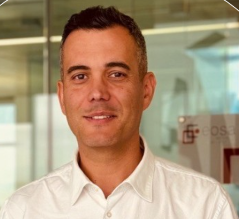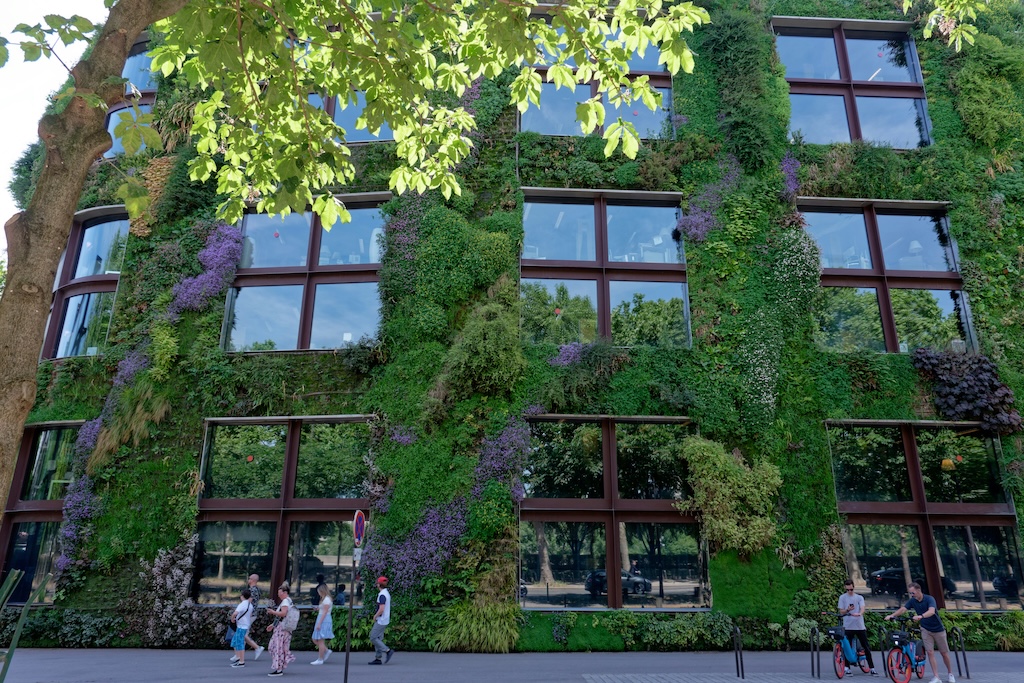Luis Touriño on… Sponge Cities and Green Infrastructure
Urban Voices #42, May 2025

Luis Touriño
Luis Touriño Guerra is a forest engineer working at Spanish consultancy EOSA, where he leads projects on sustainability and urban innovation. He supports cities and governing authorities in Spain and Portugal in promoting public policies that integrate urban renaturation, nature conservation, and the green transition. He is currently co-leading the implementation of actions within the Greening Cities Partnership of the Urban Agenda for the EU.
As part of your work at EOSA, and as an expert in the Greening Cities Partnership of the Urban Agenda for the EU, you support Spanish municipalities in scaling nature-based urban transitions and renaturation efforts. Could you tell us more about what this work entails?
Our work operates on two interconnected levels: strategy and action. At EOSA, we support municipalities of various sizes in designing urban policies that integrate green transition and renaturalization as central pillars. This means incorporating green infrastructure, climate change adaptation, and urban resilience into strategic planning documents such as Local Urban Agendas—aligned with Spain’s Urban Agenda—or in the definition of urban renaturalization or local green infrastructure plans. In recent years, we have developed over 20 Local Urban Agendas mainly in Galicia and Andalusia.
However, planning is only part of the process; execution is equally important. Therefore, we also work on preparing and managing concrete projects that transform strategic visions into real territorial interventions. In 2025, we submitted 13 projects for Spanish cities under the Government’s Integrated Local Action Plans call, totaling over 200 million euros in investment. In all of them, renaturalization of public spaces, mitigation of urban heat islands, and flood risk prevention through nature-based solutions are key priorities.
Additionally, we coordinate initiatives within national calls, such as those from the Biodiversity Foundation, enabling investments of close to 8 million euros in Pontevedra and Santiago de Compostela focused entirely on urban renaturalization. Through cross-border cooperation projects like Green Gap, we continue to build alliances to consolidate green infrastructure as the backbone for promoting renaturalization at the local scale.
In our recent Policy Lab for Spain, you shared Pontevedra’s efforts to restore its blue infrastructure to strengthen its climate resilience. What can other cities learn from Pontevedra’s case?
I firmly believe political will is a key factor in driving real urban transformations. In Pontevedra, that political will has been sustained for over 25 years, supported by ongoing dialogue with citizens and an educational approach that has built consensus.
Pontevedra was a pioneer in Spain in reclaiming public space by prioritizing people over cars, earning it the UN-Habitat Award in 2014 and the European Urban Road Safety Award in 2020. This transformation drastically reduced pollution, traffic accidents, and traffic presence in the city center. Today, that vision extends to a strong commitment to renaturalization as a transversal axis of its urban policy.
The ecological restoration of the buried section of the Gafos River—with an investment exceeding 4 million euros—is one of the country’s most notable projects in this area. Also, the planned creation of a floodable park near the Valdecorvos River, designed to mitigate flood risk in the city’s lower areas, is a pioneering proposal in Galicia.
The clear lesson here: having a shared, well-defined city vision allows for prioritizing actions and attracting funding. When the direction is clear, resources follow.
From your experience in the Spanish context, what nature-based policies and frameworks could be adopted at the local level to mitigate the dangers of flooding and poor water management?
The first step is to thoroughly understand the risks urban areas face, especially where the relationship with rivers has been complicated or unnatural. Modeling hydraulic scenarios considering climate change helps identify those risks and design solutions that increase resilience to flooding.
At the local level, an urban renaturalization plan—or a green infrastructure plan including climate adaptation—is the key tool to address these challenges. This plan must be aligned with the municipality’s main spatial planning instrument to ensure coherence and effectiveness.
Furthermore, fostering inter-administrative cooperation with hydraulic authorities is essential so that hydrological plans and risk mitigation plans include specific nature-based solutions in urban settings. This approach was promoted by EOSA in Pontevedra, with positive outcomes.
The concept of “Sponge Cities” has gained traction in urban water management discourse, particularly following successful implementation in China. How would you assess the transferability of this approach to Spanish (and European) urban contexts, considering the distinct climatic, spatial, and governance frameworks?
I believe the transfer of the “Sponge Cities” concept is not only feasible but necessary in Spain, especially as climate change increases the risk of flooding from torrential rains.
One key problem in our cities is the occupation of natural spaces near rivers and flood zones, which limits their capacity to respond to water. Improving water infiltration in urban areas not only reduces flooding but also enhances the city’s metabolism and biodiversity.
Working in this direction requires intense dialogue with urban planners and architects, not only during planning but also throughout the execution of interventions aimed at reducing impervious surfaces. Coordination among all involved administrations is also fundamental to pooling efforts.
At EOSA, we support the Galicia regional government in scaling up this concept, with participation from Augas de Galicia in the Interreg Europe Resurexion project, which develops multilevel strategies for urban resilience and basin management against extreme weather. This international collaboration will help improve policy instruments in Galicia to strengthen the Sponge City concept in urban projects with municipalities to reduce flood risk.
Which existing examples of water-resilient cities stand out to you as potential models for European cities to follow? Why?
There are several outstanding examples in Europe of innovative and successful water-resilient management through green infrastructure and nature-based solutions.
Malmö, Sweden, is an emblematic case and received the UN-Habitat Award for its integrated stormwater management in urban neighborhoods and commitment to green infrastructure that absorbs and stores water, reducing flood risk while creating quality green spaces for residents. Malmö has successfully combined climate resilience with high-quality public spaces.
Recently, I visited Arnhem, Netherlands, where flood risk was reduced by increasing the river section near the city using green solutions. These measures manage high flows, boost biodiversity, and provide recreational areas, achieving a balance between functionality and quality of life. The total investment was around 25 million euros.
In Spain, Vitoria-Gasteiz suffered severe flooding issues, especially in its industrial park, due to soil impermeabilization and artificial canalization of rivers and streams. The creation of the “Green Belt” and, particularly, the restoration of the Salburua Wetland have been fundamental in reversing this situation. This natural system acts like a sponge that retains and filters rainwater, significantly reducing flood risk, alleviating pressure on urban infrastructure, and enhancing biodiversity while offering high-quality natural spaces for the city.
More articles

Luca de Stefano on… urban design in the context of pandemics...
Luca de Stefano on… urba...
Luca de Stefano on… urban design in the context of pandemics
'Like every young designer, we wanted to change the world. We believed our collective impact could be much bigger than one guy designing beautiful museums. And that was how Non-Architecture was born.'

Dr. Andrea Armstrong-Pulinx on… NBS for Extreme Heat Resilience...
Dr. Andrea Armstrong-Pulinx on...
Dr. Andrea Armstrong-Pulinx on… NBS for Extreme Heat Resilience
Dr. Armstrong-Pulinx discusses her research on advancing coordinated, just and effective extreme heat resilience for local authorities.

The JRC’s urban activities and the New Leipzig Charter: Exploring the role...
The JRC’s urban activiti...
The JRC’s urban activities and the New Leipzig Charter: Exploring the role of science for policy post 2020
Investigating the JRC’s potential role in supporting urban policy-making over the next ten years, within the framework for sustainable urban development proposed by the New Leipzig Charter.